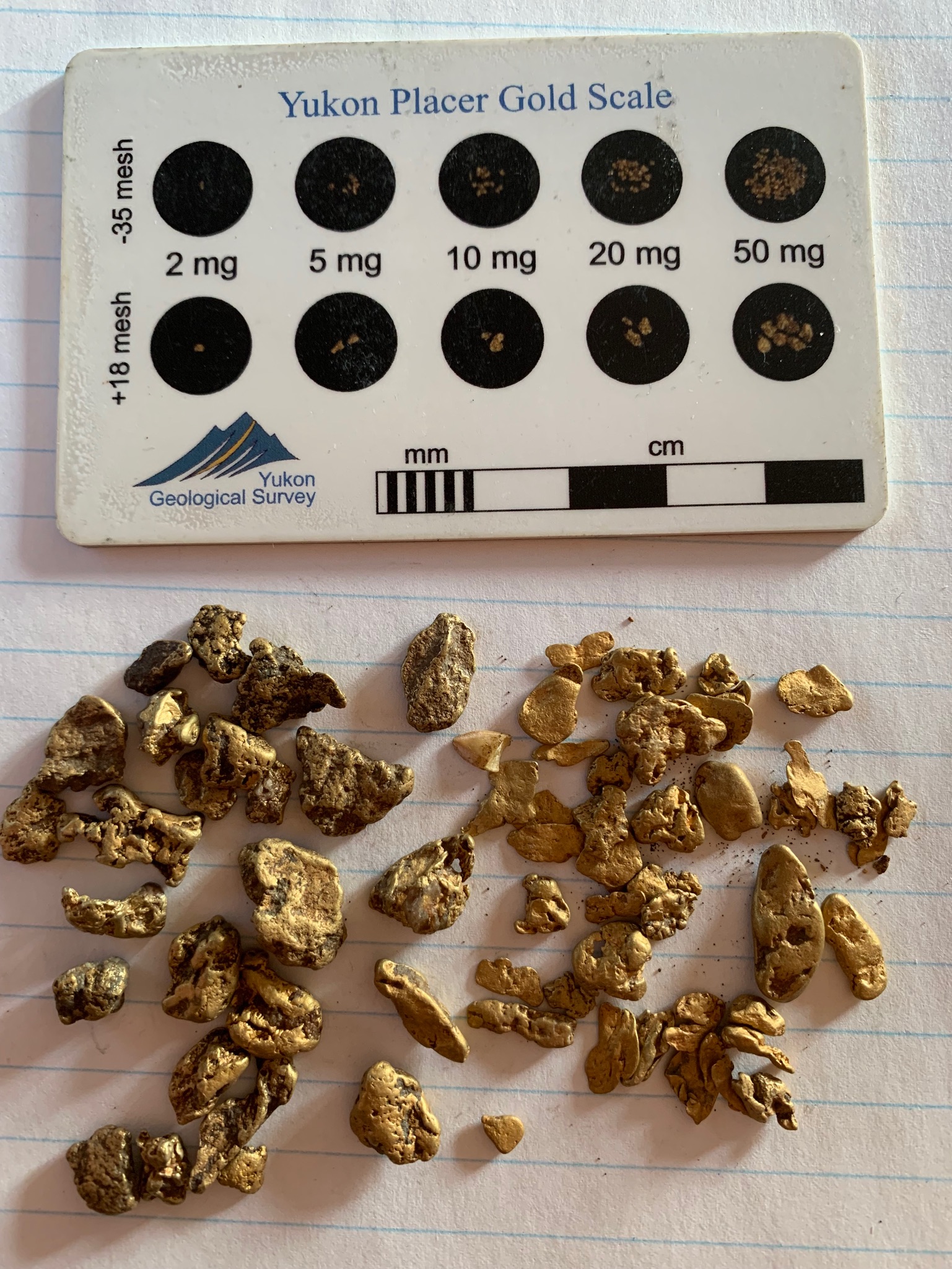Gold in the Yukon
The main reason for the high concentration of placer gold mines along the Klondike Plateau is related to the fact that this vast area has been mostly untouched by glaciations. This part of Beringia was always relatively dry, from the past until our days (on the Pacific coast it rains 8 times more than in the Klondike) and the snow didn't accumulate during the ice age.
The rest of the goldfields of the Yukon (Mayo, Carmacks, Whitehorse area) and of British Columbia (Atlin, Quesnel, Cassiar area), have been affected, re-worked or buried by the powerful action of different glacial events.
That's the reason why the Klondike plateau still is the favorite target for the placer miners: the deposits of unglaciated areas are easy to prospect and mine. The problem today is that these historical goldfields have been already mined several time and the miners are literally "scraping the bottom of the barrel": it's just about time to extend the frontiers and to look for new mineable ground!
In the modern days, with the development of new prospecting technologies (mostly geophysical) we can easily scout under the surface for hidden paleo channels or ancient benches. The modern prospectors are finally able to locate the remains of ancient fluvial systems buried under the glacial till and open new options for the placer mining industry of the Yukon.
Our group is dedicating part of its resources to scout for news mineable terrains in glaciated or partially-glaciated areas: in 2013, 2014 and 2015 we opened a brand new area at Big Creek (map 115P15), near the Red Mountain (Mayo district). We found good gold along this previously neglected valley and we staked the "Oz Property", 80 claims and 3 mile of prospecting lease.
During summer of 2016 on this new property started a successfull mining operation performed by a well established company. The miners are already recovering good amounts of gold and the exploitation will be continue in bigger force during the next years. This was a great success achieved by our team of explorer. We will keep searching along those new areas previously negletted by the placer mining industry.
Type of deposits
We are doing placer mining, this is much less risky than hard rock mining, here's the difference:
HARD ROCK MINING
The gold of the Yukon is originated by several different sources with similar pattern (subsidence, crust-melting, re-concentration and deposition) and different structural-related history. The Klondike area in particular is one of the most extended and "juicy" placer gold area still productive around the world. The original lode deposits scattered in many different types of hosting rocks, here have been eroded for millions of years and tons of free gold have been subsequently re-concentrated by the action of gravity and running water. Gulches, creeks and rivers separated heavy minerals and gold from the rest of the lighter materials, by acting like a giant/natural sluice. Today the 75% of the placer gold present in this region is still hidden in the gravel of several undiscovered deposits.
In this form of mining the gold of primary deposition is mined directly from the mother-rock, by pulverizing previously crushed chunks of blasted rocks and then smelting the ore with industrial/high-cost. processes.
Disadvantages: enormous effort and costs for exploration (usually from 5 to 50 million dollars for a single project) and much more for mining (several million dollars just to set up the mine and the smelter); only the 0.2% of the world mining exploration projects lead to success.
Advantages: huge production of gold in case of success.
Risk: Great when compared to the very large investments spent into exploration campaigns with uncertain results. Nevertheless, the financial risk is mostly diluted among a big number of investors.
PLACER MINING
Exploitation of alluvial deposits where free gold is disseminated in different concentrations with loose material (mostly alluvial or glaciofluvial gravel).
Disadvantages: The available areas are becoming fewer. Less yield than hard rock mining.
Advantages: much lower investments required for this type of exploration and mining.
Risk: due to the smaller scale of these form of mining, the expenses are mostly covered by single miners or by small partnerships, which make the bills higher. The cost of a placer mining enterprise could vary between $ 100-250,000 for a small scale operation (2-3 workers) to 5-10 millions for a big operation (20-25 workers).
Thanks to the growing price of gold and to the modern uncertain world economy, the placer mining industry is experiencing a renaissance. Today the demand for placer claims is exceeding the supply. Still, the risk for this form of mining is higher for inexperienced new miners (more and more are coming to the Yukon on these days). We strongly recommend to these new miners: "before investing money in a business which is new to you, to contact our geologists and sit down with them to discuss in detail the type of operation that you're planning".
Planning together with experienced and qualified operators is the only way to reduce the risks of your new enterprise.
Yukon Exploration Green Gold Inc. will support you with all the necessary information to start a mining business, in the less risky way for your finances. We also guarantee the recovery of gold on our proven ground (the guarantee is valid only if you will carefully follow our directions while mining on our properties).
IF YOU ARE PLANNING TO INVEST IN PLACER MINING DO NOT HESITATE TO CONTACT US AT ANYTIME.

